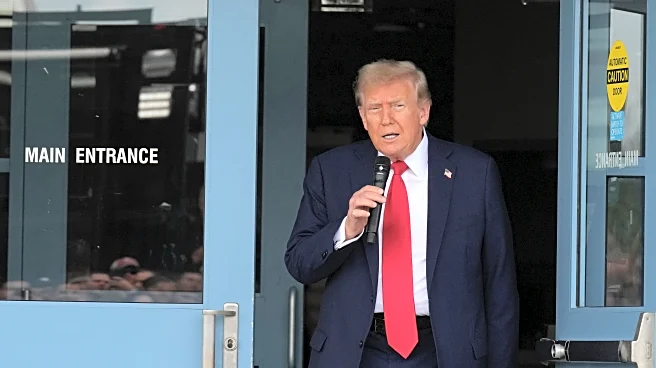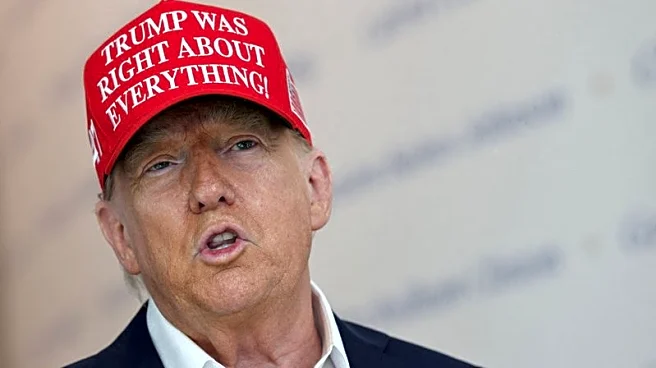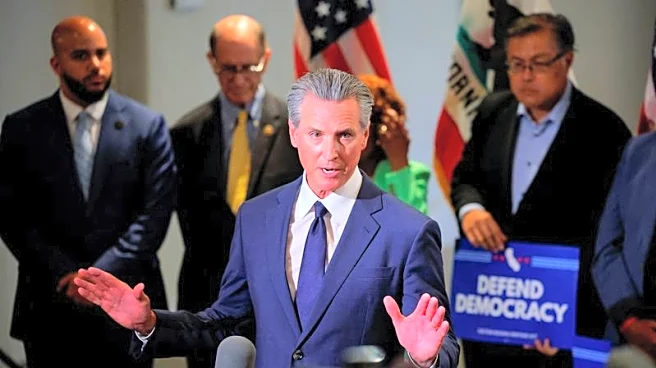What is the story about?
What's Happening?
President Trump is overseeing a significant reduction in the federal workforce, marking the largest single-year cut since World War II. The Office of Personnel Management (OPM) Director Scott Kupor announced that the federal workforce will decrease from 2.4 million to 2.1 million employees by the end of 2025. This reduction is largely attributed to the Department of Government Efficiency's efforts, with up to 80% of the cuts resulting from federal workers opting for buyouts or programs that support them while transitioning to other employment. The remaining 20% of the workforce reduction involves direct layoffs. This initiative follows historical precedents set by past presidents, such as Harry S. Truman, Ronald Reagan, and Bill Clinton, who also implemented workforce reductions, albeit over multiple years.
Why It's Important?
The reduction in the federal workforce has significant implications for U.S. public policy and governance. It reflects a shift towards streamlining government operations and reducing federal expenditure. The cuts could lead to changes in how federal services are delivered, potentially affecting public access to these services. The move may also influence the political landscape, as it aligns with President Trump's broader agenda of government efficiency and fiscal conservatism. Stakeholders such as federal employees, unions, and public service beneficiaries may experience varying impacts, with some facing job losses and others encountering changes in service delivery.
What's Next?
As the workforce reduction progresses, further developments may include adjustments in federal agency operations and potential policy shifts to accommodate the reduced workforce. Stakeholders, including political leaders and civil society groups, may respond with advocacy or policy proposals to address the consequences of the workforce cuts. The OPM Director Scott Kupor has indicated that no significant new layoff announcements are expected this year, suggesting a period of stabilization following the initial reductions.
Beyond the Headlines
The workforce reduction raises ethical and social considerations, particularly regarding the impact on affected employees and their families. The transition for those leaving federal employment may involve challenges in securing new jobs and adjusting to changes in their professional lives. Additionally, the reduction may prompt discussions on the role and size of government, influencing long-term policy debates on public sector efficiency and resource allocation.
AI Generated Content
Do you find this article useful?













